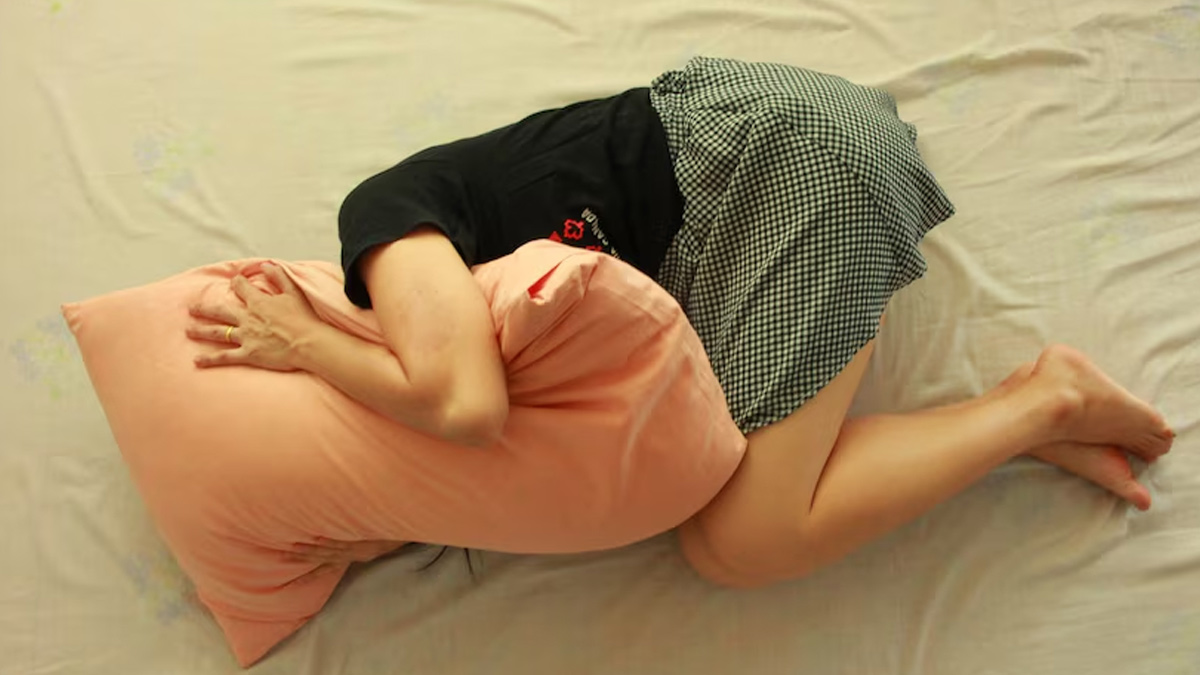
Lower back pain is among the most prevalent complaints in the modern world, affecting the lives of people of all ages. From sitting for extended periods of time at the workplace to poor posture and physical inactivity, various factors lead to it. However, what most of us don't know is that the way we sleep also contributes a lot to relieving or aggravating the discomfort. The alignment of your spine, the mattress you sleep on, and even the manner in which you put your pillows can directly affect how your back feels the following morning. If you’ve been waking up with stiffness or an aching back, it might be time to rethink your sleeping position.
Table of Content:-
Why Sleeping Position Matters for Lower Back Pain
In an exclusive interaction with the editorial team of Onlymyhealth, our expert, Dr Pooja Pillai, Consultant – Physician, Aster CMI Hospital, Bengaluru, explained that while we sleep, our body enters repair and recovery mode. “If your spine is not aligned in that state, the muscles and ligaments in your lower back can become stretched. This puts pressure on the discs and joints in the lumbar area over time, causing morning soreness and long-term damage. Sleeping in a proper position keeps your spine aligned, alleviates stress from your muscles, and promotes better blood flow,” she shared.
Also Read: Is There A Link Between Posture and Digestive Issues? Find Out Here

Best Sleeping Positions to Prevent Lower Back Pain
Thus, Dr Pillai shared the best sleeping positions to prevent and manage lower back pain:
1. Sleeping on Your Back with a Pillow Under the Knees
This is usually the ideal position for individuals with lower back pain. Sleeping on your back spreads out your weight and eliminates pressure points. Having a small pillow under your knees will also help keep your spine in its natural position. This keeps the lower back from compressing against the mattress, adding support and comfort.
2. Sleeping on Your Side with a Pillow Between the Knees
If sleeping on your back feels too awkward, side-sleeping is the alternative. However, it will twist your spine and put strain on you if you're not in perfect alignment. The secret here is to position a firm pillow between your knees. This helps keep your hips, pelvis, and spine in alignment, taking pressure off your lower back. You can also draw your legs up toward your chest softly in a fetal-like position for extra comfort.
3. The Fetal Position for Herniated Discs
“Curling up in a relaxed fetal position is beneficial for people with herniated discs. Sleeping in this position widens the space and puts less pressure on the spinal discs. Be sure not to curl up too tightly, though, as it will also limit deep breathing,” she added.
Also Read: Monsoon Maladies: Your One Simple Fix for Chronic Dry Eyes, Says Expert

4. Avoid Sleeping on Your Stomach
While some individuals tend to sleep on their stomachs naturally, it is among the worst positions for lower back pain. It compresses the normal curvature of the spine and bends your neck to the left or right, producing additional stress. If you can't help it, put a thin pillow beneath your pelvis to support your lower back.
Additional Tips for Pain-Free Sleep
Here are a few additional expert-approved tips to wake up each morning pain-free and refreshed:
- Select the appropriate mattress: A medium-firm mattress is commonly advised to help stabilise spinal alignment.
- Pillow support is essential: Your pillow ought to support your neck but not tilt it back or forward.
- Stretch before sleeping: Loosen your muscles with gentle stretches and help your body relax before sleeping.
- Be consistent: Condition your body to maintain a supportive position each night for long-term comfort.
Bottomline
The ideal sleeping position to prevent lower back pain is what feels most comfortable for you, but the golden principle is to maintain your spine supported and straight. Most people find sleeping on their back with a pillow under the knees or their side with a pillow between the knees comfortable. With small modifications to your sleeping patterns and attention to mattress and pillow selection, you can start your day feeling fresh, bright, and ache-free.
Also watch this video
FAQ
1. Is sleeping on the floor beneficial for lower back pain?
It can be good for some by giving firm support, but not for all and is only comfortable in the short term.2. How many pillows do I need to use to support my back when sleeping?
One for your head and one for your knees (depending on sleeping position) is normally sufficient for good alignment.3. Can altering my mattress genuinely ease lower back pain?
Yes. A medium-firm mattress that provides support for natural spinal curves can improve sleep comfort and minimise pain.
How we keep this article up to date:
We work with experts and keep a close eye on the latest in health and wellness. Whenever there is a new research or helpful information, we update our articles with accurate and useful advice.
Current Version
Oct 26, 2025 20:50 IST
Published By : Tanya Srivastava